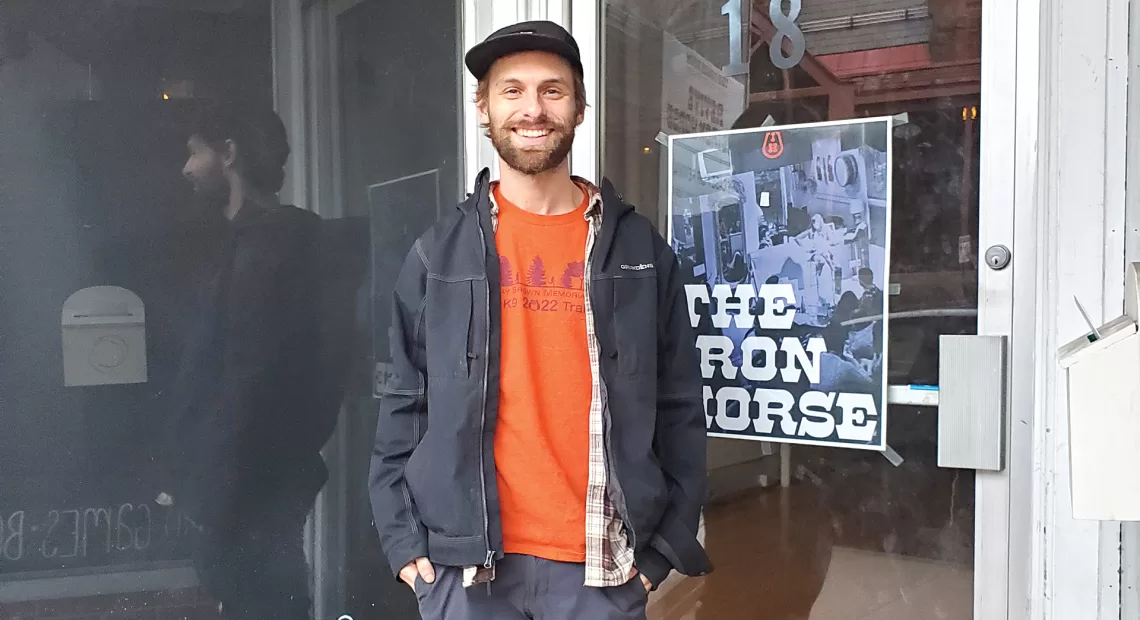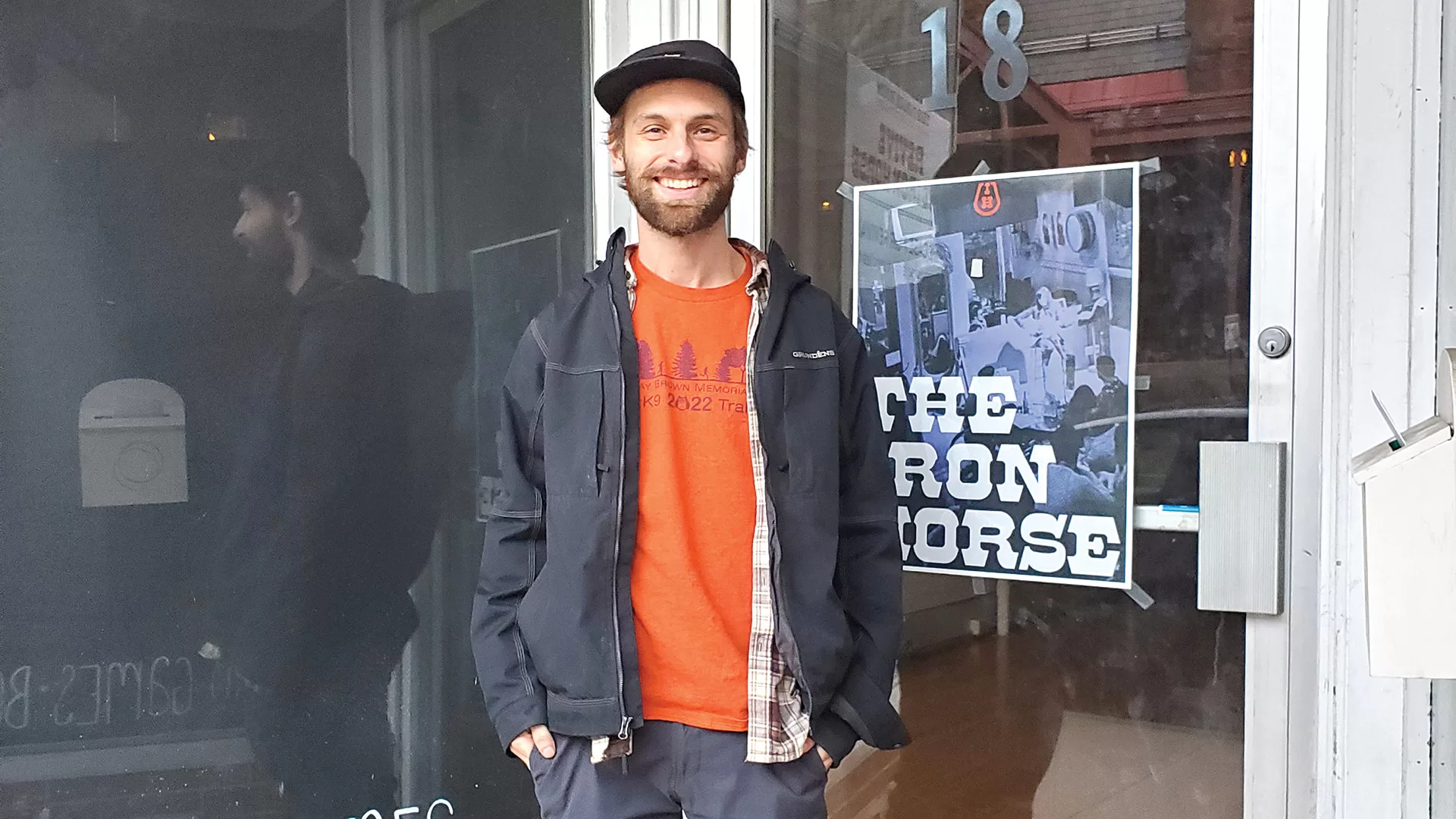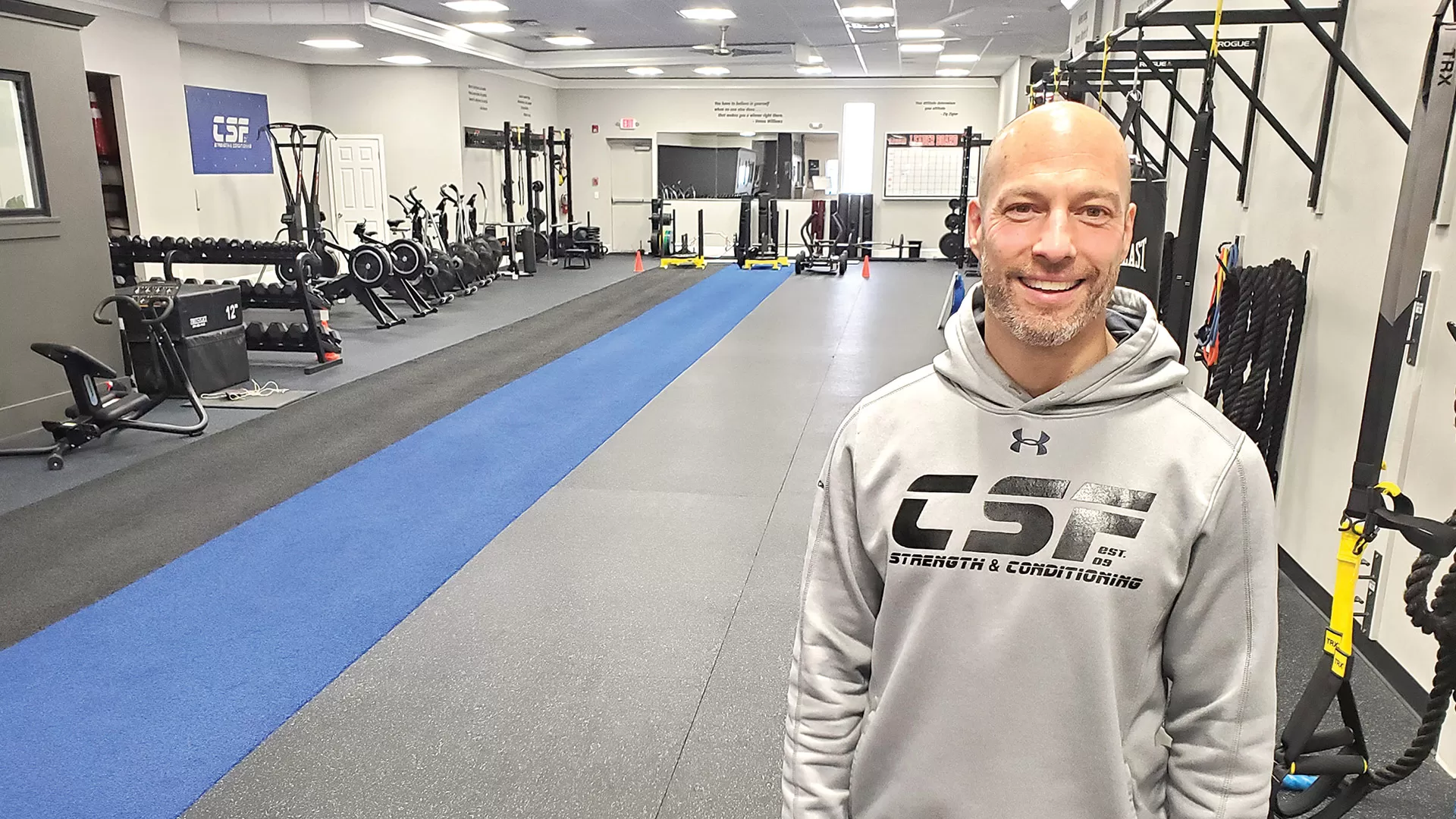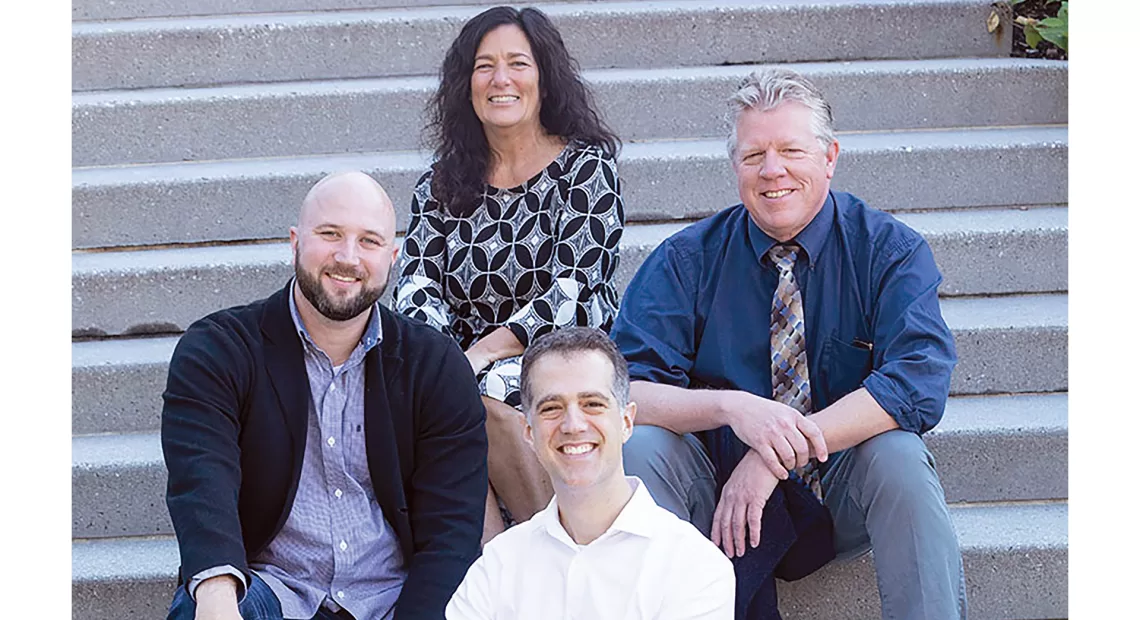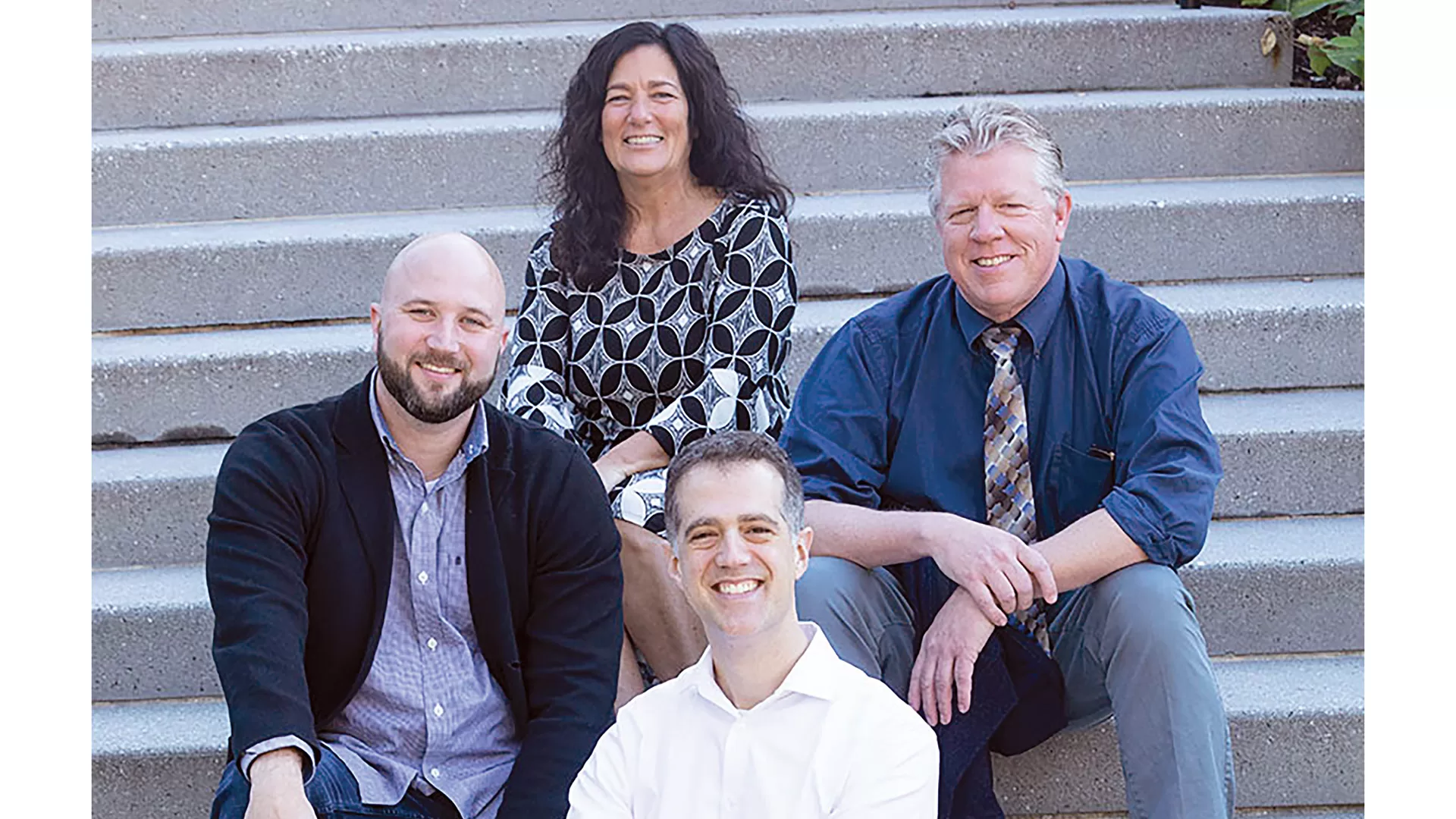A New Era Dawns

Mick Corduff
Mick Corduff calls it his “research and development time.”
It comes early in the year, when things are slower in the hospitality sector. It’s a time to reflect, drill down on what happened the year before, and ramp up the planning for the year ahead.
“I look back and measure all that was good and all that wasn’t good,” he said. “Menus that worked and didn’t work, staffing and structures that worked, management positions that worked and didn’t work; we always try hard to raise the bar.”
This year, research and development time is more than a little bit different … because last year, there were a few distractions, as he put it.
Indeed, 2023 saw a long partnership — more than two decades — between Corduff and Peter Rosskothen come to an end when Rosskothen sold his shares in the company that owns the Log Cabin Banquet & Meeting House, the Delaney House restaurant and D. Hotel Suites & Spa to Corduff and his new business partner, Frank DeMarinis.
The end to the business relationship, which had been talked about for several years and then finalized over the course of 2023, came in late September, ushering a new era for a group of businesses that comprise one of the pillars of the region’s hospitality sector, and for which Rosskothen had long been the face.
“The past four months have definitely been very hectic, but I like to think that I’ve handled pressure well over the years. It’s something that a chef has to do.”
Corduff now becomes the new face, moving from what was mostly, but not entirely, back-of-the-house operations to back and front of the house, although he’s taking steps to delegate some of his many responsibilities to other managers.
For now, and for the foreseeable future, he has a lot on his plate — literally and figuratively. There are the day-to-day operations and coping with challenges ranging from the still-rising cost of food to an ongoing workforce crisis to meeting the many needs of today’s marrying couples. He’s also overseeing the return of Sunday brunch at the Delaney House, planning for the upcoming St. Patrick’s Day parade events and a ‘sister-city’ trip to Ireland later this year, and advancing some ambitious plans for the future. While doing all that, he’ll spend some time in the kitchen cooking as well.
In a candid conversation with BusinessWest about all of the above, and especially the many responsibilities he now handles, Corduff said he brings to his new and expanded role what he calls a chef’s mentality.

The return of Sunday brunch at the Delaney House has been just one item on the plate for the new ownership team.
“The past four months have definitely been very hectic, but I like to think that I’ve handled pressure well over the years,” he noted. “It’s something that a chef has to do. What I’ve learned in my years of experience in the back of the house — and in the front of the house as well, especially over the past four or five years — is the importance of keeping a level head and just knowing that, at the end of the day, we’re dealing with people, whether it’s waitstaff or a contact for the bride and groom; they’re people, and you want to treat them with respect.
“I learned a lot from Peter over the years — we always worked in tandem,” he went on. “We always talked about the best way to handle things and put our best foot forward and maintain the integrity of the business. We always had the same message — excellence is what we’re all about, and we try to promote that across the board.”
As for those plans for the future, they are, indeed, ambitious, and include a possible new hotel and restaurant to be built on a portion of the upper parking lot at the Log Cabin.
“We’re dreamers — that’s what entrepreneurs are,” Corduff said. “And we have some dreams that we want to make reality.”
Food for Thought
As he talked with BusinessWest at 10 a.m. on a recent Tuesday morning, Corduff had his chef’s coat on, one announcing him as ‘chef owner.’
He wasn’t doing any cooking at that moment, nor was he planning to do any soon, but the chef’s coat was still the attire of choice. To paraphrase Bill Belichick, it is who he is.
“I don’t think I’ll ever the leave the kitchen — I love what I do,” he said, adding that he has a few business suits … somewhere. He had more years ago, when he served as front-of-house manager at the Log Cabin and wore one every day. But he ruined some of them of them when wandering back to the kitchen, where he feels most at home, and getting food stains on them.
“We’re known in the community as a quality product, and we aim hard to maintain that standard.”
Ever since, the chef’s coat has been the uniform, if you will, and Corduff wears it everywhere and for everything, from planning for the Big E (the group has a huge presence there) to meeting with the media, an assignment that mostly fell to Rosskothen years ago, although Corduff did it, too; from reviewing accounts payable to doing long-range planning.
These are now mostly, if not entrely, Corduff’s purview, and it’s a change, that, as noted, has been years in the making.
That’s how long the two partners talked about Rosskothen moving on and focusing his time and energies on one of their latest entrepreneurial ventures — Delaney’s Market, which now has four locations across the region — with Corduff taking the lead at three Holyoke establishments: the Log Cabin as well as the Delaney House restaurant and the adjoining D. Hotel Suites & Spa.
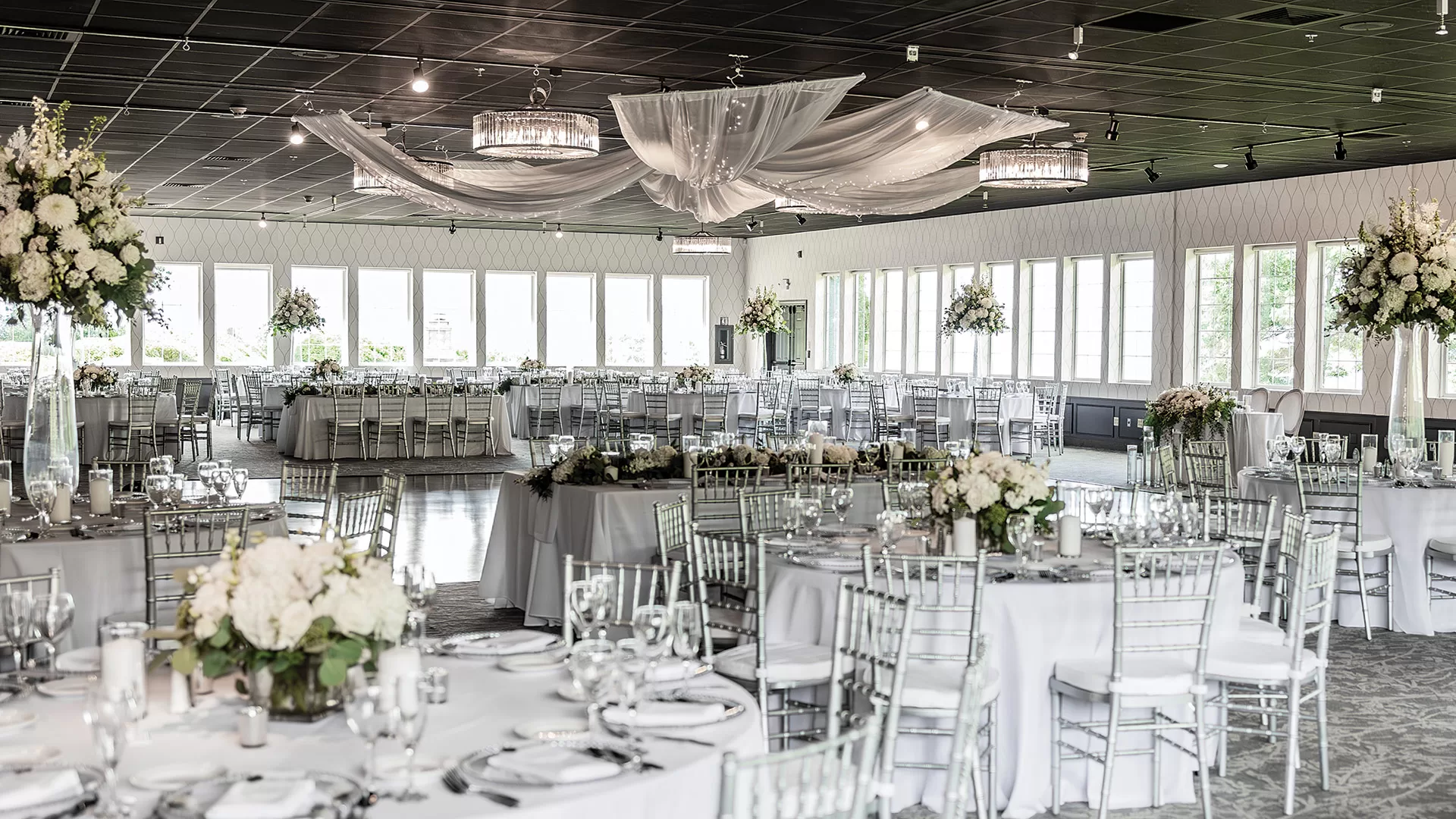
The main ballroom at the Log Cabin, one of several properties in the group now owned and managed by Mick Corduff and Frank DeMarinis.
He’s doing so with new partner DeMarinis, president of Sage Engineering and Contracting Inc. in Westfield and a local developer, builder, owner, and manager of more than 25 commercial real-estate properties in Massachusetts and Connecticut. He is also the founder and owner of Roots Sports complexes in Westfield and East Longmeadow, as well as Roots Learning Center in East Longmeadow.
For Corduff, this is the intriguing next chapter in a story that began when he came to this country from Ireland in 1989, working first as a banquet chef at the Marriott in Springfield and later as a member of its quality-management team.
Eventually, he started doing some catering on his own and began looking at getting into business for himelf. While pursuing those dreams, he also interviewed to be head chef at Twin Hills Country Club. The interview was with Larry Perrault, who was at that time finalizing plans to join Rosskothen in a venture to reimagine the old Log Cabin restaurant property, in the shadow of Mount Tom, into a banquet facility.
They went to lunch at Friendly’s, where the discussion wasn’t about Twin Hills, but about the Log Cabin.
“I met Larry, I met Peter, we walked around the old Log Cabin, whipped out the drawings, and started our dream,” he said. “The rest is history.”
More than a quarter-century of colorful history, in fact, involving change, evolution, expansion (the Delaney House, then the the hotel, then Delaney’s Market), innovation, and overcoming challenges that ranged from the Great Recession to the pandemic. Over the course of that time, Corduff moved from chef to partner when the relationship with Perrault dissolved — a partnership that lasted 20 years.
The buyout came in late September, one of the busiest times for this group of businesses, leaving Corduff “without much time to stop and think,” he said — something he’s able to do now. Early on, he’s spent considerable time and energy reassuring the large staff that the business is stable and ready to maintain its standing as a market leader.
“A lot of what I do now, mapping out the year and planning out the seasons that are coming, is making sure that we have the right people in the right places, making sure everyone’s ready to do whatever it takes and trained in the art of war and the art of optimization.”
Moving forward, in the role of chief operator and executive chef, he will work in partnership with DeMarinis, who will focus on the construction and infrastructure sides of the equation, while Corduff will be handling day-to-day operations.
While doing so, his primary mission is to maintain the group’s reputation for quality — at all levels of its operation, from weddings, which are perhaps its hallmark, to a Friday-night dinner at the Delaney House, to a weekend stay at the hotel, now managed by Corduff’s wife, Dana.
“We’re known in the community as a quality product, and we aim hard to maintain that standard,” he said. “We have to adapt because the business is constantly changing and evolving.”
More Growth on the Menu
Looking back on the past 25 years or so, Corduff said that, for much of that time, he was back-of-the-house and more behind the scenes than the colorful, always-quotable Rosskothen. But later on, he started becoming more visible, and people could put a face with a name.
Or a voice with a name.
Indeed, Corduff was prominent in radio spots for the Log Cabin and Delaney House, specifically their steaks, made famous by the word ‘marbling,’ which Corduff would pronounce slowly for added effect. Later, he became more known through the opening of the Mick, a tavern of sorts within the Delaney House providing casual dining and live music.
With the change in ownership consumated last fall, he now assumes more responsibilities, especially in the big-picture planning for the future.
“My managers know that I will run into the hottest fire,” he told BusinessWest. “So whoever needs me, I’m there. And a lot of what I do now, mapping out the year and planning out the seasons that are coming, is making sure that we have the right people in the right places, making sure everyone’s ready to do whatever it takes and trained in the art of war and the art of optimization.
“In the catering world, you can be doing a wedding in a tent under a tree out in the woods, no power, no water, so we have to plan it all out,” he went on, using that example as metaphor for business in general and the need to be ready for anything.
And, as noted earlier, the two partners are entrepreneurial, intent on expanding this business group and making more changes.
One ongoing project is to essentially separate the front (lower) parking lot at the Log Cabin from the rest of the property, with the intention of it becoming home to a Dunkin’ Donuts and the fifth Delaney’s Market, an operation that will be Rosskothen’s domain as part of the buyout agreement.
The larger and more ambitious plan, however, calls for redevelopent of the upper parking lot.
“The vision is to build a hotel in the upper lot,” Corduff said, adding that DeMarinis, the engineer, is developing plans to move dirt and create more space to park cars in that area while also identifying a footprint for a hotel and acompanying restaurant. The hotel would be a smaller, boutique facility, similar to the D. Hotel at the Delaney House, with maybe 60 to 80 rooms.
“We really want to bring to it some of the Log Cabin character, some of the New England character, with some of our own touches,” he said, adding that a rooftop restaurant, one with dramatic views down the mountain, is also within the plan, one that will likely take shape over the next three to four years.
As he talked with BusinessWest, Corduff recalled what he called a “sendoff” for Rosskothen the night before at the the Mick. It was an occasion to mark the end of an era, the end of a business relationship, and the start of the next chapter.
“It was a kind of a thank you and sendoff, and it was cool to see,” he said. “We had some staff that don’t work here anymore that came to say ‘hi’ and ‘bye.’ There was a lot of gratitude in the room last night; there’s been a lot of years of hard work together.”
And many more to come, Corduff added, noting that, with the passage of one era, another has begun. And as it does, he will certainly fall back on that chef’s mentality (not to mention the chef’s coat) he mentioned earlier.
And that means keeping a level head and always treating people with respect.



